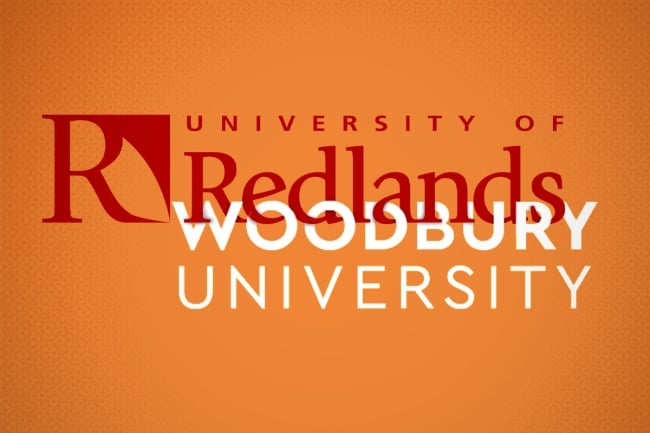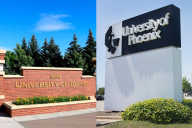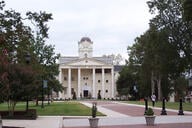You have /5 articles left.
Sign up for a free account or log in.

University of Redlands | Woodbury University
The University of Redlands, a private institution in California, confirmed its latest expansion Tuesday, announcing a merger with nearby Woodbury University. The formal announcement follows the signing of a letter of intent in early December.
Both universities are small liberal arts institutions in the greater Los Angeles area. Woodbury is located in Burbank, and the University of Redlands’ main campus is about 75 miles away. Redlands operates six additional branch campuses extending to Northern California.
Redlands’ first merger occurred in 2019, when it acquired the San Francisco Theological Seminary, a 150-year-old Presbyterian institution. Redlands administrators more recently began the process of merging with the Presidio Graduate School, a private institution in San Francisco, in December 2022.
The merger, the first announced this year, follows a wave of closures and mergers throughout 2023 as colleges and universities across the country experience continued declines in enrollment and pressing financial challenges. The Pennsylvania Academy of Fine Arts announced last week that it will close at the end of the 2024–25 academic year.
Clare McCann, director of higher education at Arnold Ventures, a philanthropic group, said she only expects this trend to intensify, particularly among small, expensive private institutions that highly depend on tuition revenue.
“We are increasingly seeing those schools really struggle to make ends meet,” McCann said. “Mergers and responsible closures can be a good way to address that situation.”
Although neither Woodbury nor Redlands officials formally acknowledged the merger as a reaction to declining enrollment or financial shortfalls, data suggest they were influential factors for both institutions.
Data from the National Center for Education Statistics show that both universities experienced declines in enrollment over the past decade that were exacerbated by the pandemic. But Redlands has seen a slightly smaller decline, with a net loss of about 30 percent between fall 2012 and fall 2022, compared to Woodbury, which has experienced a far steeper drop of nearly 50 percent in the same time period.
Woodbury has also suffered losses in operating funds since 2015, with the exception of 2020, when it had a $2.6 million gain in net income, likely as a result of support from federal COVID relief funds. Redlands, on the other hand, has generally been on an uphill climb financially since its last operational loss in 2012.
Krista Newkirk, president of the University of Redlands, said that exploration of the merger began in September, when Woodbury reached out expressing interest in an “alliance.”
“We started doing some work then through an intermediary, and as we gained more information, what we saw were the opportunities for two historic, prestigious Southern California universities to come together, institutions that had strong mission alignment,” Newkirk said.
Several of Woodbury’s programs—including game design, architecture and animation—were “strong matches” for Redlands’ strategic plan, which aims to add academic programs that are responsive to the job market, she added.
“We see their location in the Burbank area as a great expansion opportunity. It puts us into an employer market and next to the entertainment industry, which is something that we’re really interested in engaging in,” she said. “It was really a way for the University of Redlands to expand its academic portfolio and gain a reputation outside of the Inland Empire, where we are more readily known.”
Newkirk declined to say if or how the administrations of the two universities would integrate and whether there would be any specific staff cuts. She said the universities’ leaders are “still working through a lot of the details.”
She did say, however, that she anticipates Redlands will maintain Woodbury’s facilities and it will operate as an additional Redlands branch campus. She expects minimal to no program cuts but noted that duplicative programs will likely be combined and, in order to offer such programs at both campuses, students may transition to a hybrid or other “more efficient model” to finish their coursework.
The universities currently intend to file for a change of control in June, but that is only the first step of a new merger process under recently amended regulations from the U.S. Department of Education. The two colleges will still technically operate as independent institutions until the department completes a formal review.
“And we don’t know how long that will take,” Newkirk said.
She noted that Redlands is still awaiting approval from the department of its merger with Presidio, which was filed a little over six months ago.
McCann hopes the institutions will provide clear, consistent and proactive communication with students to ensure they receive the information needed to decide what is best for them.
“It is really important and incumbent upon the colleges, in this case, to make sure those students know where to go for answers to their questions,” she said. “It’s an emotionally charged time when a college announces that it’s going to close or merge. So students need to be able to trust that the information they’re getting from the school is complete and accurate.”
John MacIntosh, manager of the Transformational Partnerships Fund, a coalition of philanthropies that helps colleges explore collaboration options, said although some people may question whether the transition is a merger or more of an acquisition, small private institutions should be thinking about how best to serve students and create a sustainable model, given national demographic shifts and a looming shortage of college-age students.
“Asking how equal the merger is shows skepticism,” he said. “Instead, we should go in with a framework of ‘let’s see how this goes.”
The alternate option is for an institution to be in denial and wait until it’s too late, MacIntosh added, and recent data suggest that abrupt closures lead to “terrible outcomes,” especially for minority and low-income students.
“Let’s be cheering from the sidelines,” he said. “Making these decisions is devilishly difficult. If we don’t celebrate these decisions, let’s at least be respectful and appreciative of all the hard work that goes on behind the scenes to make it happen.”




